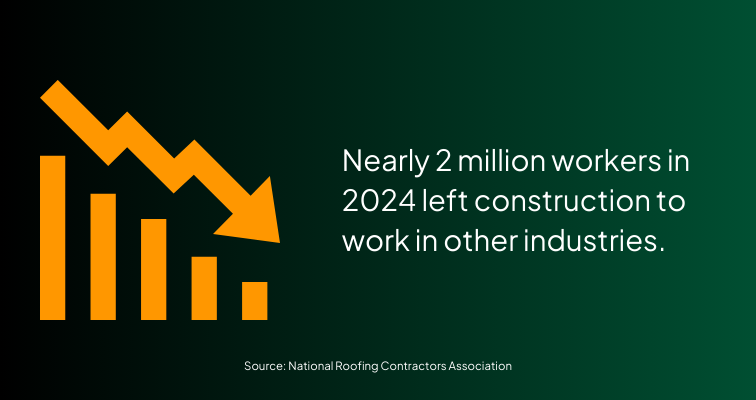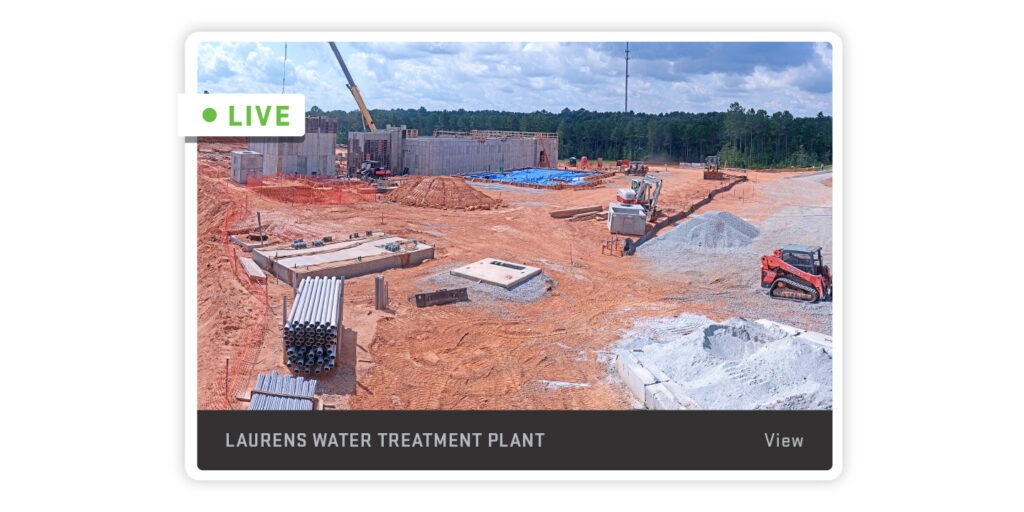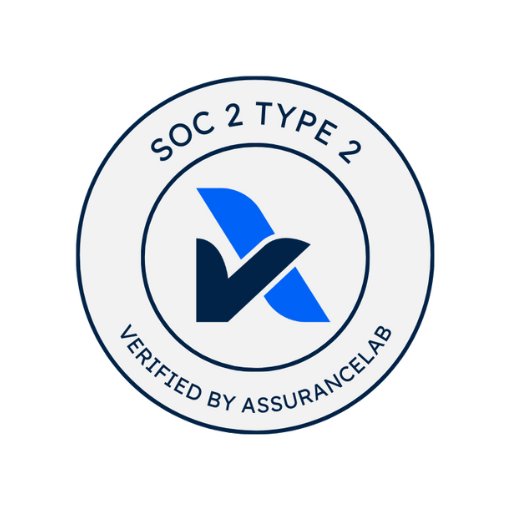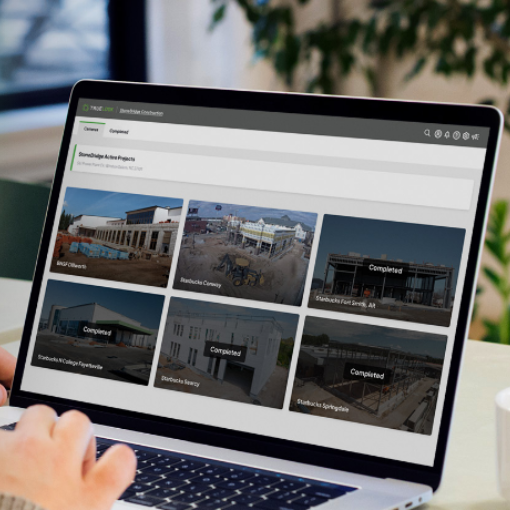Imagine staring at your computer screen, watching as the material prices for your project climb for the third time this month. Meanwhile, your superintendent texts about another subcontractor no-show.
Like thousands of construction project managers across the country, you face the daily battles of workforce shortages, supply chain chaos, and communication breakdowns that threaten your project’s timeline and budget.
The construction industry continues to experience its fair share of challenges, with new technologies offering solutions alongside fresh challenges like cybersecurity threats and complex sustainability requirements. Yet many construction firms struggle to adopt these innovations, caught between traditional practices and the digital transformation reshaping the industry.
This article identifies the top challenges facing construction project managers in 2025 and explores how technology, particularly construction cameras and visual intelligence solutions, provides effective tools to overcome these obstacles and deliver successful projects despite the industry’s growing complexity.
Current Challenges in Construction Project Management
The construction industry faces a complex array of obstacles that directly impact project efficiency and successful outcomes. Let’s explore the key challenges project managers must navigate to deliver completed projects on time and within budget while meeting stakeholder expectations.
Labor Shortages and Skills Gaps
In 2025, the construction industry continues to struggle with a significant labor shortage due to several factors, including an aging workforce, residual impacts from the pandemic, competition from other industries, and rising demand for skilled labor to accommodate advances in technology.
Associated Builders and Contractors estimated that construction firms need to attract nearly half a million workers for projects in 2025 and 2026. This trend poses significant challenges for project managers who will need to ensure not only adequate workforce numbers but also that they are upskilling their teams to be able to meet the demands of their projects.

The construction sector’s persistent image problem deters many potential workers from considering careers in the trades despite competitive wages and advancement opportunities. Construction firms must strengthen partnerships with trade schools and develop compelling apprenticeship programs to rebuild a skilled workforce capable of meeting industry demands.
Supply Chain Disruptions and Material Price Volatility
Global economic fluctuations and geopolitical tensions continue to create supply chain disruptions that directly impact construction project timelines and resource allocation. Project managers must navigate these challenges while maintaining clear communication with key stakeholders about potential delays and cost implications.
Tariffs, sanctions, and other international trade obstacles create material price volatility that remains a significant challenge for construction companies attempting to establish accurate project budgets and prevent cost overruns. Mitigation strategies include analyzing historical data, developing relationships with multiple suppliers, and implementing digital tracking systems to monitor supply chain issues before they cause serious consequences.
Slow Adoption of Technology
New technologies, such as automated machinery, AI, and the Internet of Things (IoT), have the ability to help project managers become more agile and efficient, enabling quicker and more intelligent decision-making.
That said, implementing new technologies can seem daunting at first. However, overcoming these initial concerns and embracing tech offers significant benefits, streamlining operations and empowering teams.
In general, the construction industry has been relatively slow to embrace technological innovations. To take full advantage of technological advancements, project managers must keep their pulse on a rapidly evolving technology landscape. They must also allocate ample budget and time to adopt and implement new technologies as they emerge.
One way to encourage technology adoption is to look for solutions that are easy to implement and use. Solutions that integrate with existing systems, such as project management software and other previously established workflows, are much easier to implement and serve as a great starting place.

Advanced construction camera systems that enable remote live viewing, collaboration features, and cloud-based storage of jobsite photos and footage find their way onto jobsites more commonly. These features assist with cost mitigation, scheduling, labor shortages, risk management, and compliance.
Increased Cybersecurity Threats
As construction firms adopt more management software and digital technologies, they face growing vulnerability to sophisticated cybersecurity threats. Malicious actors target project data and communication systems, which can damage your reputation and cause loss of data or money.
Protecting sensitive information is now a critical component of risk management, requiring construction companies to implement robust security protocols across all job sites. Consider adding some of these measures to your defense strategy:
- Regular software updates and patch management
- Multi-factor authentication for project management systems
- Encrypted data transmission for sensitive project information
- Comprehensive employee training on cybersecurity best practices
- Network segmentation between office and field operations
- Regular security audits and vulnerability assessments
- Secure backup systems to protect against ransomware
- Clear data access protocols for subcontractors and stakeholders
- Partnering with SOC 2-compliant technology providers
What is SOC 2 Compliance?
SOC 2, or Systems and Organization Controls 2, is a standardized cybersecurity compliance framework that helps organizations protect customer data and reduce the risk of security breaches.

Poorly defined cybersecurity objectives can expose project owners to data breaches that compromise intellectual property and stakeholder expectations. Effective hazard management in the digital realm demands that project managers identify potential hazards early, communicate effectively about security measures, and keep all team members on the same page regarding digital safety protocols.
Managing Remote and Hybrid Work Models
The construction industry has embraced hybrid work arrangements that allow general contractors and key stakeholders to collaborate through digital platforms while construction workers remain on-site. However, this hybrid approach creates schedule conflicts and communication barriers.
Those drawbacks lead to ineffective coordination between office-based managers and field personnel who need to be on the same page. Task delegation and quality control are significantly more complex when project owners operate remotely, and may even lead to poor client satisfaction.
Improper planning at the initial stage of remote collaboration results in unclear project scopes and poorly defined goals. Construction companies must establish clear communication channels that bridge the divide between decision-makers and those responsible for adhering to building codes and safety measures.
Sustainability and Environmental Regulations
Compliance with government regulations is an ongoing challenge for construction project managers who must stay current on the latest regulatory updates. Compliance challenges range from tracking regulatory changes to documentation and record-keeping to communication gaps between managers and their teams.
Back in 2023, OSHA made updates to both its Hazard Communication Standard and its Tracking of Workplace Injuries and Illnesses Final Rule. There is still a growing emphasis on sustainable construction practices, including Green Building Policies.
2025 brings new updates to PPE usage, particularly around proper fit. Likewise, continued concern about lead exposure prompts limits that align with health regulations. Construction managers must stay up to date with these changes, as well as document their efforts to prove compliance in the case of an audit.
Maintaining Project Timelines and Budgets
Managing costs and project timelines isn’t a new challenge for construction project managers. One study found that over 91% of construction projects either go over budget or over schedule, sometimes even both. The common culprits?
- Rising costs of materials and labor
- Changes in designs and client demands
- Unpredictable weather conditions
- Unrealistic estimates to win bids
- Scope creep
In 2025, these challenges will remain a top priority. While construction project managers can anticipate a stabilization of the cost volatility that characterized much of the COVID era, they should now prepare for cost volatility due to trade tariffs and international supply chain uncertainty.
Leveraging Technology to Overcome Challenges
The construction industry faces many hurdles that can hurt project efficiency and slow completion. New technologies help project managers tackle these problems and keep future projects on track even when resources are tight. Those advancements include:
- Enhanced Visibility and Remote Oversight: Construction cameras provide real-time visual access to your jobsites from anywhere. This not only allows project managers to monitor overall progress and subcontractor activity without constant physical presence, directly addressing remote and hybrid work management, but also offers critical insights. You can visually verify if personnel are wearing required Personal Protective Equipment (PPE) and actively deter and document theft of costly materials, a common challenge impacting budgets and timelines.
- Data-Driven Insights for Improved Efficiency: Smart software tools meticulously track site activity and pinpoint workflow inefficiencies. This data-driven approach helps you optimize resource allocation to mitigate the impact of labor shortages and strategically manage schedules to navigate supply chain disruptions, ensuring issues are fixed before they cause project delays.
- Streamlined Communication and Collaboration: Visual updates and integrated platforms keep clients, remote teams, and on-site crews consistently informed. This builds trust with key stakeholders and seamlessly supports remote and hybrid work models, ensuring everyone stays on the same page.
- Mitigating Risks and Ensuring Compliance: Always-on recording systems document everything in case of problems, providing undeniable evidence for dispute resolution. These systems also actively monitor safety practices to help meet health administration rules and strengthen overall site security against cybersecurity threats by protecting connected devices and sensitive data.
Using these tech tools can transform how construction companies handle their biggest challenges and deliver projects on time. When project managers embrace these solutions, they can overcome both labor shortages and scheduling issues while keeping everyone on the same page throughout the project’s lifecycle.
Empowering Project Managers with Visual Intelligence
The hurdles impacting construction PMs in 2025, from labor shortages and supply chain disruptions to cybersecurity threats and compliance demands, require new solutions that provide better visibility and control. Construction cameras are more than simple security tools; they’re complete visual intelligence platforms that address challenges by connecting remote teams, documenting progress, and providing the data needed for informed decision-making.
Ready to face these challenges head-on? Explore TrueLook’s construction camera solutions and help your team overcome these challenges to deliver more successful projects in 2025 and beyond.
Success Story:
TrueLook x StoneBridge Constructoin
Learn how StoneBridge Construction saved $50,000 by spotting something on their camera’s live feed.


